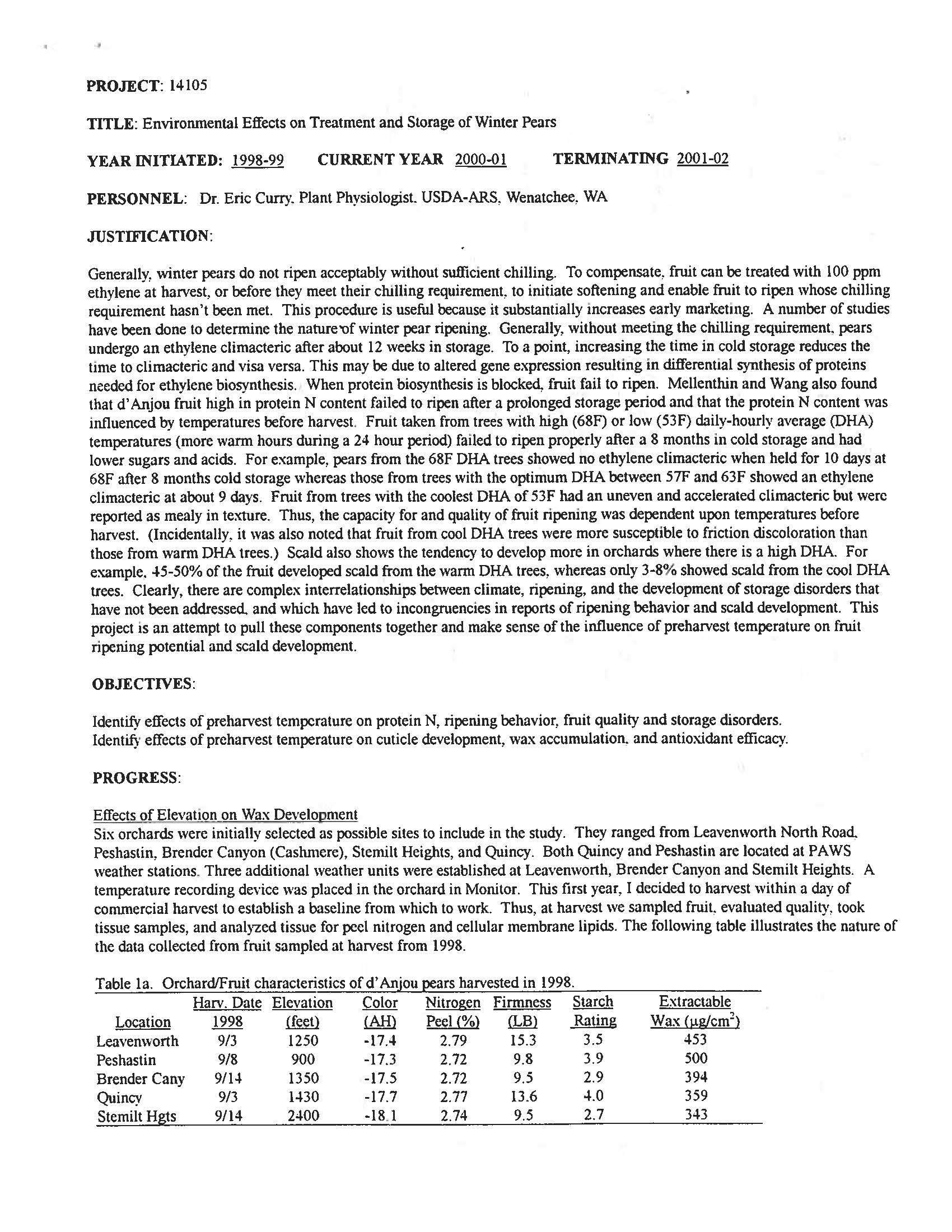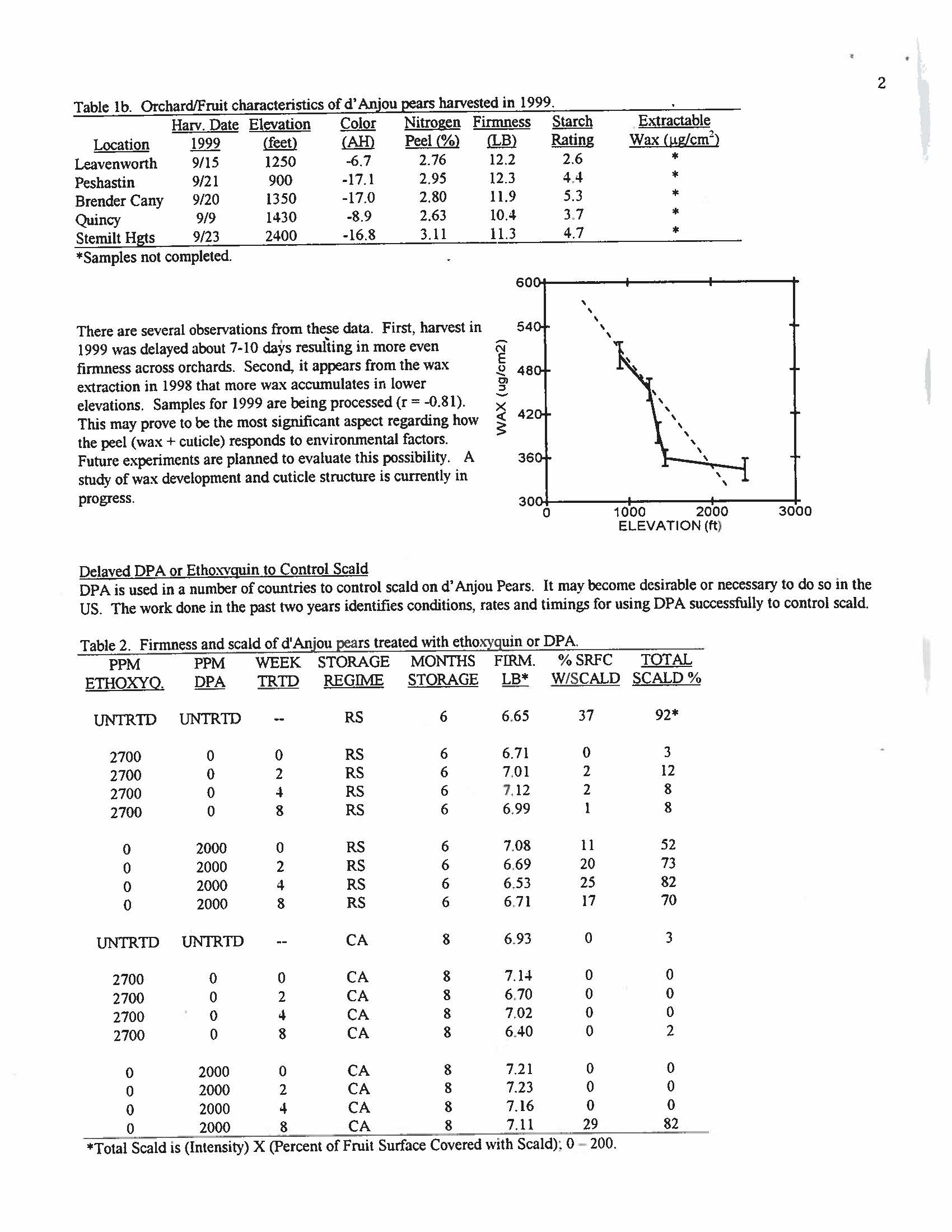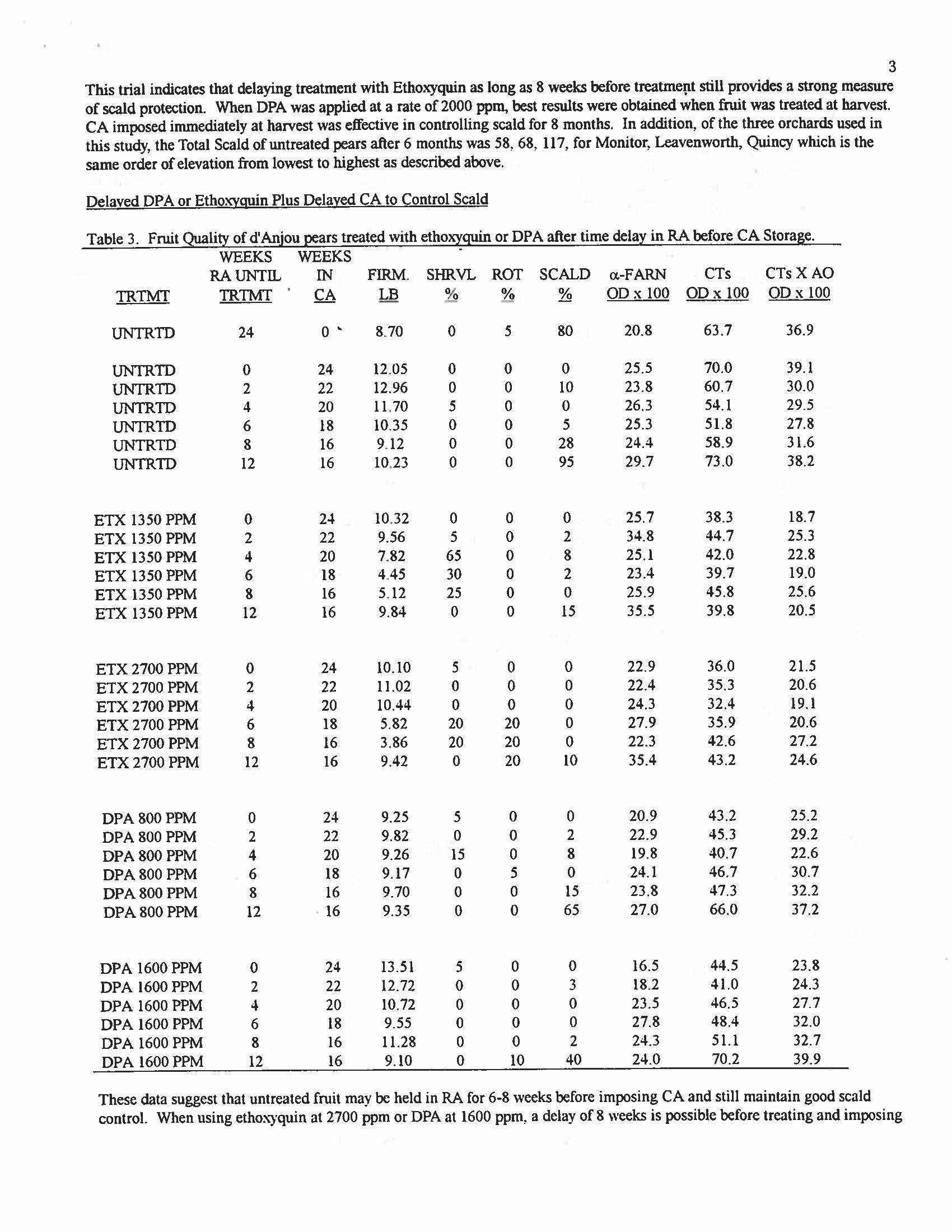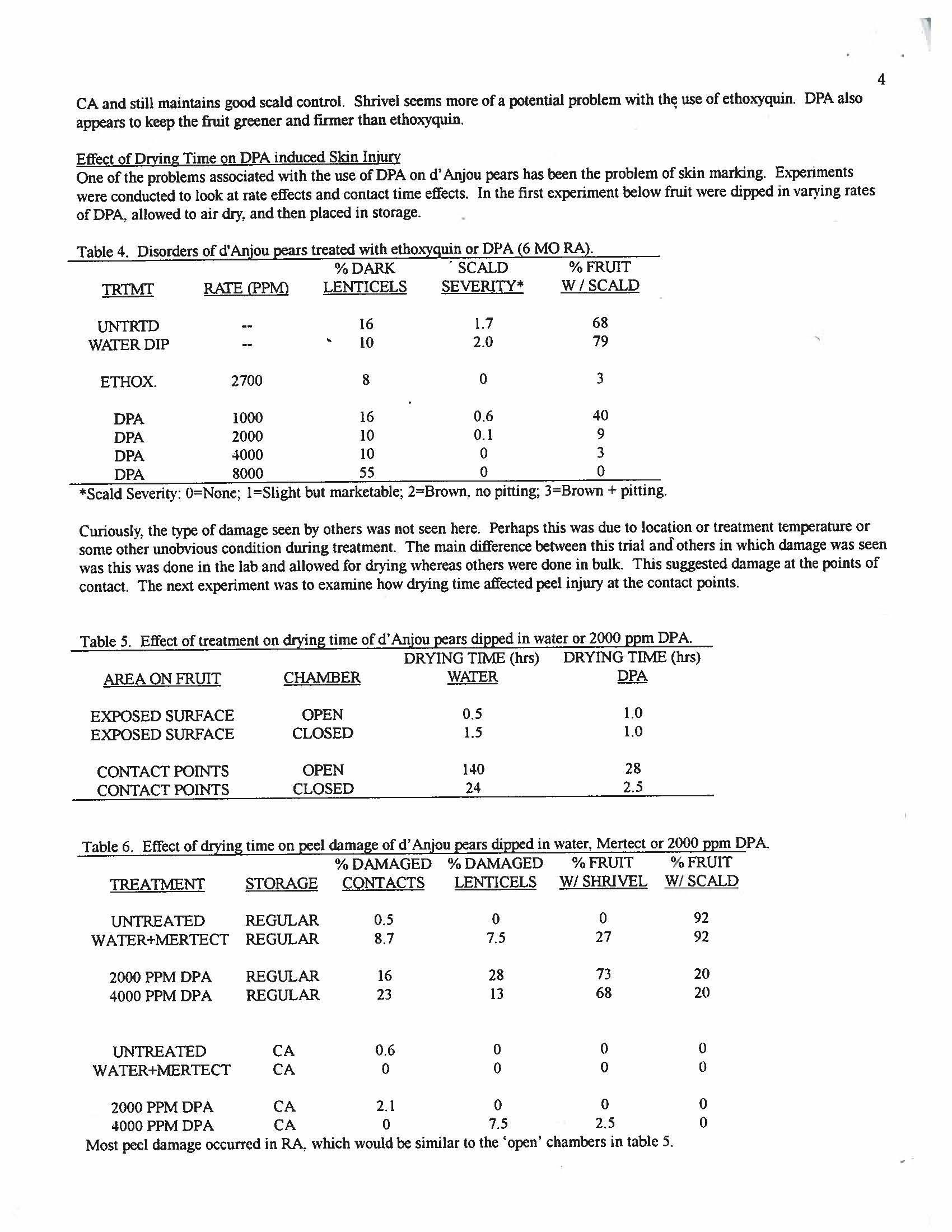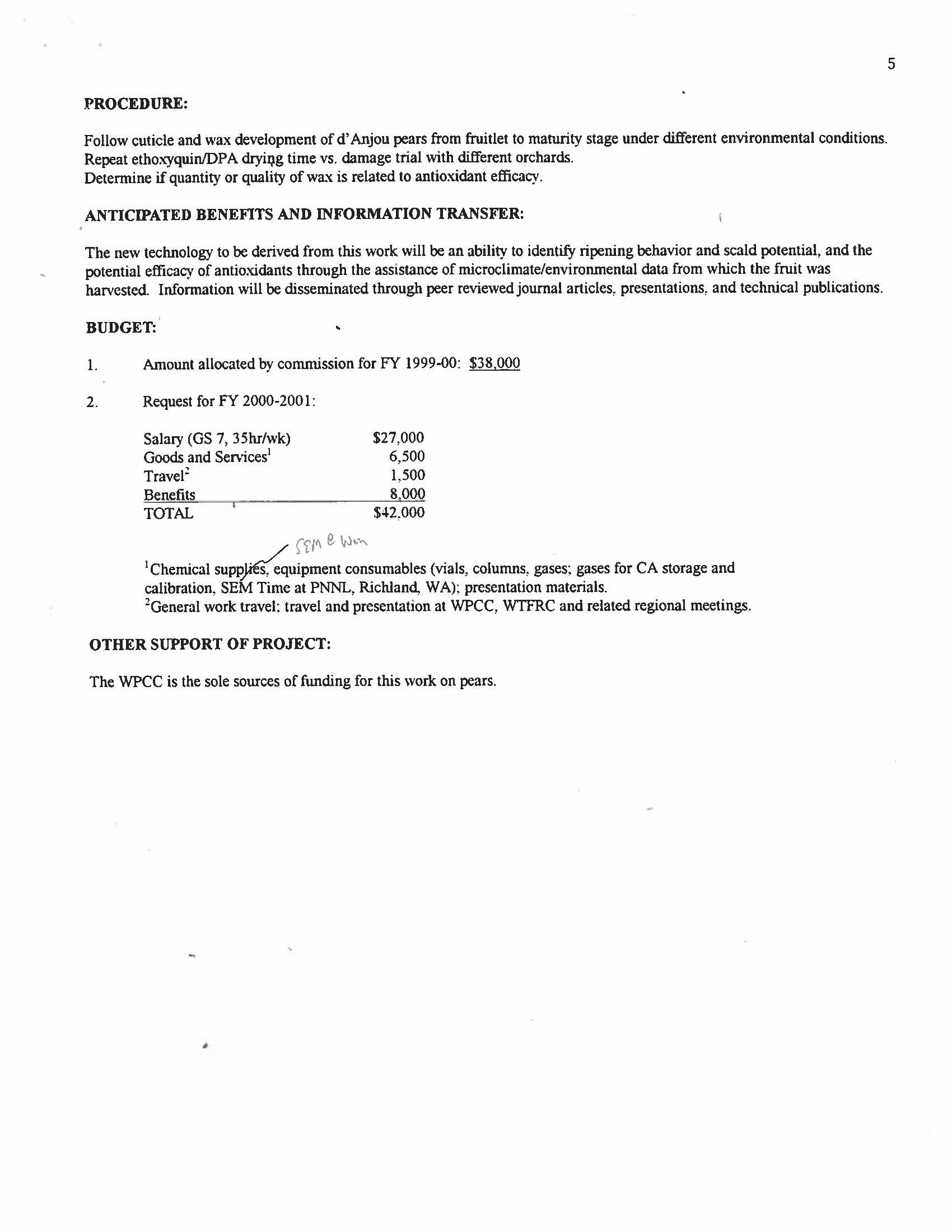Environmental Effects on Treatment and Storage of Winter Pears
Author: Dr. Eric Curry
Published: 2001
Summary: Generally, winter pears do not ripen acceptably without sufficient chilling. To compensate, fruit can be treated with l00 ppm ethylene at harvest, or before they meet their chilling requirement, to initiate softening and enable fruit to ripen whose chilling requirement hasn't been met. This procedure is useful because it substantially increases early marketmg. A number of studies have been done to determine the nature'Of winter pear ripening. Generally, without meeting the chilling requirement. pears undergo an ethylene climacteric after about 12 weeks in storage. To a point, increasing the time in cold storage reduces the time to climacteric and visa versa. This may be due to altered gene expression resulting in differential synthesis of proteins needed for ethylene biosynthesis. When protein biosynthesis is blocked, fruit fail to ripen. Mellenthin and Wang also found that d' Anjou fruit high in protein N content failed to ripen after a prolonged storage period and that the protein N content was influenced by temperatures before harvest. Fruit taken from trees with high (68F) or low (53F) daily-hourly average (DHA) temperatures (more warm hours during a 24 hour period) failed to ripen properly after a 8 months in cold storage and had lower sugars and acids. For example, pears from the 68F DHA trees showed no ethylene climacteric when held for 10 days at 68F after 8 months cold storage whereas those from trees with the optimum DHA between 57F and 63F showed an ethylene climacteric at about 9 days. Fruit from trees with the coolest DHA of 53F had an uneven and accelerated climacteric but were reported as mealy in texture. Thus, the capacity for and quality of fruit ripening was dependent upon temperatures before harvest. (Incidentally, it was also noted that fruit from cool DHA trees were more susceptible to friction discoloration than those from warm DHA trees.) Scald also shows the tendency to develop more in orchards where there is a high DHA. For example. 5-50% of the fruit developed scald from the warm DHA trees, whereas only 3-8% showed scald from the cool DHA trees. Clearly, there are complex interrelationships between climate, ripening, and the development of storage disorders that have not been addressed. and which have led to incongruencies in reports of ripening behavior and scald development. This project is an attempt to pull these components together and make sense of the influence of preharvest temperature on fruit ripening potential and scald development.
Keywords:

